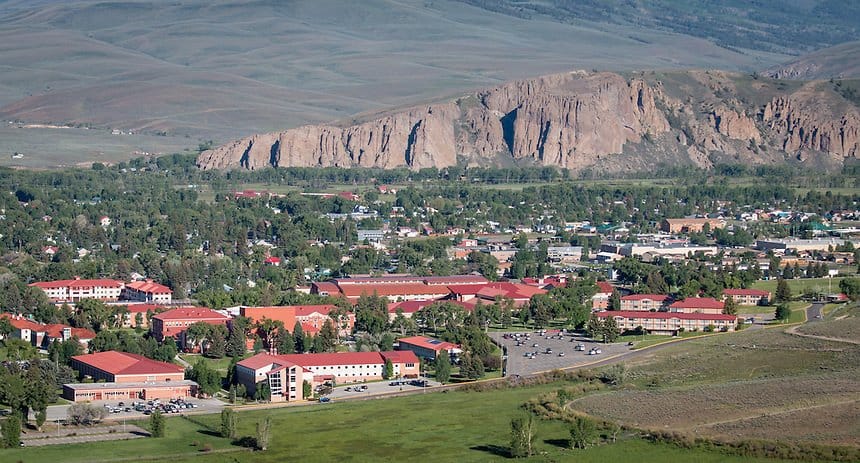
When it comes to a university’s academic offerings, universities too often allow silos to form between departments. Sometimes, the evidence of these barriers is physical—programs exist within their respective buildings, and little crossover—both physically and intellectually, takes place.
This is not a uniquely Western trend—it extends to all corners of academia. Subject experts (i.e., many university professors) have a natural tendency to group themselves into increasingly narrow fields, and to congregate with and reward other narrow subject experts.
This natural tendency—which should be fought vigorously—bleeds over into instruction and can result in students receiving an education that is compartmentalized to their chosen major or minor, and leaving university with little generally applicable, crossover knowledge that can be utilized to tackle broad, complex, and “wicked” problems that many students will soon encounter.
David Epstein catalogs this problem in his 2019 book Range, where he bemoans the lack of rigorous, interdisciplinary education at all levels in America, and shares examples of generalists solving out-of-the-box problems that cannot be solved by deep, narrow knowledge.
Now let’s look at a closer example: Western’s Humanities Department, for instance, is confined with Taylor Hall, and functions almost entirely separately from the fine arts disciplines over in Quigley.
I have been told this by more than a half dozen undergraduate students studying the arts and humanities—they rarely if ever freely exchange between buildings, as there is seemingly little reason to do so.
There are even two distinct portions of the school’s arts and literary magazine, Pathfinder—one for the artistic portion, and one for the written—and the two elements do not converse regularly.
This distance between related departments, in my humble view, poses a substantive problem. These artificial barriers across campus constrain students and faculty alike, and serve no one in the grand scheme of intellectual inquiry.
In other instances, the partition between disciplines is less obvious, but there is limited, or nonexistent, crossover in events and ideas—more missed opportunities. With more than 100 different fields of student open to undergraduates—and nine graduate programs—the possibilities for intellectual crossover on Western’s campus, both physically and virtually, are plenty bountiful.
Increased collaboration between departments would be a strategic endeavor to maximize the capabilities of our faculty, and to deliver the strongest education possible to students. Western could differentiate itself from peer institutions by fostering programs which blend art and engineering, for example, or environment and business, or dozens of other ready-made collaborations that lie dormant within existing programs.
Many students already make their own double or even triple majors to fuse together different realms of academic study—why not make double majors a formally endorsed program? Or create special interdisciplinary majors which bring together multiple departments?
All of this is not to say that cross-disciplinary collaborations do not already exist on Western’s campus, along with programs linking the university to related businesses and nonprofits—some of these programs do exist.
This past year, Western’s Outdoor Industry MBA program and Paul M. Rady School of Computer Science and Engineering forged a connection with Blister around product testing and development, known as Blister Labs, that is deserving of praise.
The newly created Mountaineer Innovation Challenge is another opportunity for engineering students, business students, and students hailing from other departments to flex their entrepreneurial muscles and create business plans around new, innovative products.
In the future, the engineering and business programs could look to expand outreach around the challenge to arts and environmental students—adding depth to the challenge and rounding out the expertise of student teams—just one example of a possible collaborative expansion.
Now, let’s take Western’s Business Department as a prime example for future program development. Business is ripe with opportunities to collaborate with engineering, art, music, and other departments—concepts of marketing, sales, entrepreneurship, and fiscal stewardship are highly translatable and provide students with the tools to forge creative careers, and to turn their innovative product designs stemming from the Rady School into fledgling businesses.
Business students could also benefit from crossover with the humanities, specifically with the communication and media corners of campus.
But let’s not stop at the Borick building. As the Rady School ramps up to full speed, Western is faced with an important question: How can we reconcile our new computer science and engineering school with our historic foundations as a liberal arts institution?
Dr. Maria Klawe, a former finalist for Western’s presidency, offered a possible solution during her visit to campus—intentionally pairing the humanities with engineering, including designed programs which require engineering and computer science students to take significant loads of art and music courses along with their typical math and physics offerings.
Such collaborative programs, which she helped popularize at Harvey Mudd College (where she is the President) are proven to boost student performance and learning—forging new pathways in the brain and producing well-rounded, highly capable graduates primed for success wherever they may land.
Western does not have to choose between being a humanities-focused liberal arts college, a technological haven offering engineering and computer science degrees, or a business-minded college offering up “practical” degrees in economics, sales, and marketing.
Rather, our university can fuse the technical with the artistic, the concrete with the philosophical—all utilizing professors and programs that are already here.
In doing so, we can make Western a stronger academic institution, and create well-rounded students fit for an increasingly complex, wicked world that rewards broad, wide-spanning knowledge.
